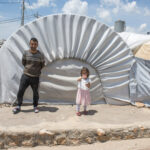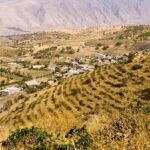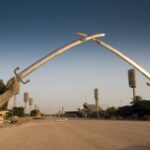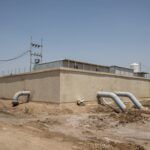Chibayish Marshes in Iraq
In early September 2023, I was privileged to be taken into the Chibayish Marshes in Iraq, 100km northwest of Basra.
In the 1990s, the marshes were drained for political motives, namely to force the Marsh Arabs out of the area and to punish them for their role in the 1991 uprising against Saddam Hussein’s government. However, the government’s stated reasoning was to reclaim land for agriculture and exterminate breeding grounds for mosquitoes. The displacement of more than 200,000 of the Ma’dan, and the associated state-sponsored campaign of violence against them has led the United States and others to describe the draining of the marshes as ecocide or ethnic cleansing.
The draining of the Mesopotamian Marshes by Sadaam has been described by the United Nations as a “tragic human and environmental catastrophe” on par with the deforestation of the Amazon rainforest and by other observers as one of the worst environmental disasters of the 20th century.
These ancient marshlands have shrunk from 20,000 square kilometres (7,700 square miles) in the early 1990s to 4,000 (1,500 square miles) by the latest estimates – choked by dams on the great rivers upstream in Turkey, Iran and Syria and the soaring temperatures of climate change.
Only a few thousand of the quarter million Ma’adan who lived in the marshes in the early 1990s remain. Most of those who now inhabit these marshes are men who stay to tend their herds of water buffalo. Their families have had to move to nearby towns like Maysan as life in the marshes has become too difficult.
Because of the low water levels, there are not enough fish to support them. Life in the marshes is also hard because of the lack of basic services (fresh water and an electricity supply) in the marshes is also a problem. The farmers told me that only 10% of families still live in the mashes.
Iraq is one of the five countries most touched by some effects of climate change, according to the United Nations. Rainfall is rarer and rarer, and in the next 25 years, the World Bank said the temperature will go up by an average of 2.5 degrees.
As I was taken in a boat through the narrow channels that wind through the reed beds, the air temperature was in excess of 46C. I was taken to a small building made of reeds deep in the marshes to meet some water buffalo farmers. They offered me tea and wanted to know if I could help get the Turks and Iranians to release more water into the marshes. I had to tell them that this request was far beyond my powers of influence. I explained that the reason for my visit was only to gather information about the provision of primary school education for the Ma’adan living in the marshes for the AMAR International Charitable Foundation.
All they can do is hope that one day, the waters will return and bring life back to the marshes.






Leave a comment